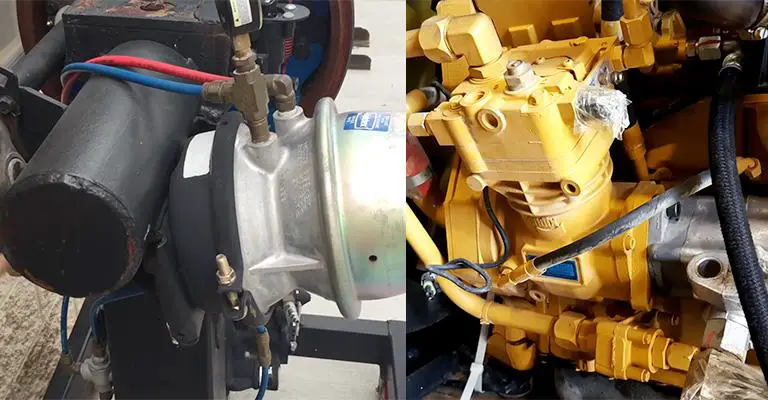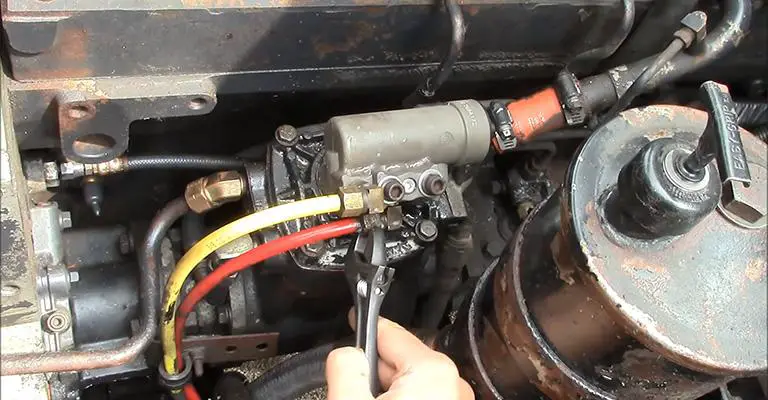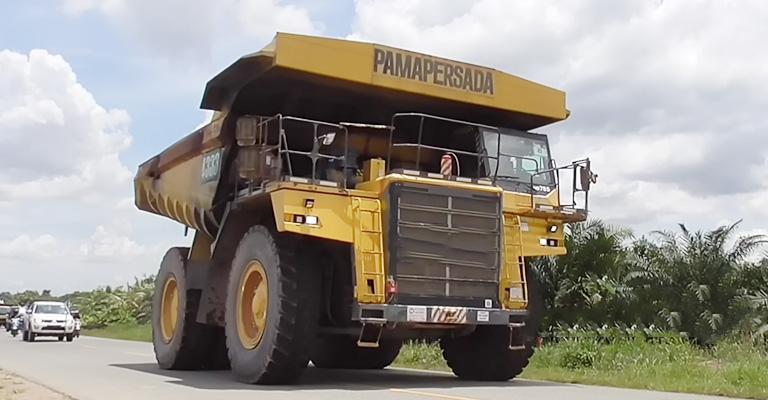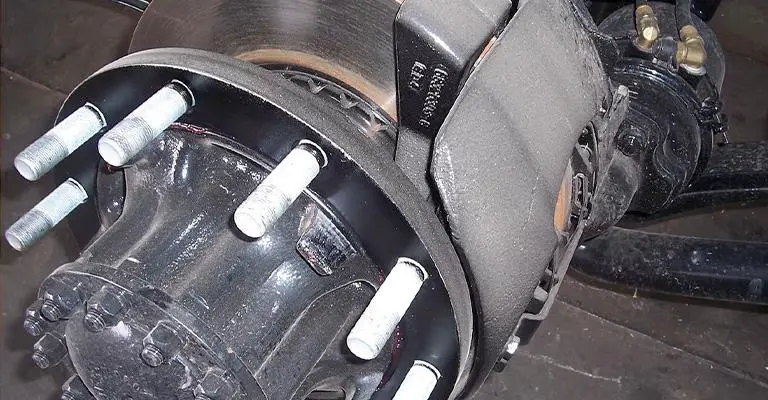Ready to learn about the differences between hydraulic and pneumatic brakes? If you’re a car enthusiast or a mechanic, you might already be familiar with these two types of braking systems.
But even if you’re just interested in learning more about how brakes work, this post is for you. This post will discuss the differences between these two types of brakes and their respective advantages and disadvantages.
We will also be examining how these braking systems work and the various applications in which they are used. Whether you are a car enthusiast, a mechanic, or just someone interested in learning more about brakes, this post is for you. So, let’s get started!

Contents
- 1 Hydraulic Vs. Air Brakes
- 2 Hydraulic Vs. Pneumatic Brakes – Which Is Better?
- 3 Final Words
Hydraulic Vs. Air Brakes
It is essential that the brake systems of large commercial and recreational vehicles are in excellent working condition to ensure the safety of their operators and those around them. There are hydraulic brake systems used on smaller passenger vehicles.
Fluids are used in these systems to operate the brakes. A large commercial vehicle usually has air brakes that use forced air to handle the braking system.
In addition to pros and cons, each system has different implications for technical complexity and cost.
Is it necessary to know the difference between air brakes and hydraulic brakes? In the following section, we provide an overview of each system and some advantages and disadvantages.
Air Brake Systems

As their name implies, air brakes utilize air to generate stopping power instead of fluid. Brakes automatically disengage when air tanks are fully inflated.
As the driver presses the brake pedal, air fills the brake chamber, pushing the diaphragm down, turning the “S-cam,” and driving the brake pads against the brake drum to stop the vehicle.
Following the brake pedal retraction, the air is released, which releases the brakes and allows the wheels to roll. When the compressor is turned on, the air pressure is raised back to the original level.
The manufacturer recommends air brakes for vehicles weighing 26,000 pounds or more, although air brakes may also be specified for vehicles weighing less than that amount. There are different types of vehicles, depending on how they are used.
Top Truck Size for Air Brakes

Is air brake technology used in trucks for a reason? The size of the truck determines the answer. The air brake system is designed for trucks that weigh between 26,000 and 33,000 pounds.
The hydraulic brakes are standard on Class 5 and Class 6 vehicles, while the air brakes are standard on Class 7 and higher vehicles. Air brakes need to be specified on lighter vehicles [less than 33,000 pounds of gross vehicle weight].
Hydraulic Brake Systems

Powered by fluid, hydraulic brakes use pressure to slow down. The hydraulic fluid pressure in each brake piston at each wheel increases as the driver presses on the brake pedal so that the brake pads are pushed against the drum (or rotor of a disc brake).
This causes friction, slows the wheels, and ultimately stops the vehicle altogether. Passenger cars use hydraulic brakes similar to those used in hydraulic brakes. A significant difference between large vehicles is that the larger components must handle the higher weight ratings.
In general, hydraulic brakes can be applied to vehicles with a gross weight rating (GVWR) of up to 33,000 pounds. However, hydraulic braking systems are generally used in vehicles up to 26,000 pounds gross vehicle weight.
Top Truck Size for Hydraulic Brakes
What is the purpose of hydraulic brakes on trucks? The size of the truck is all that matters. It can haul a maximum of 33,000 pounds of gross vehicle weight (GVWR). The most common application of hydraulic braking on vehicles with GVWRs up to 26,000 pounds is on trucks.
Air Brakes Vs. Hydraulic Brakes: Applications
In the medium- and heavy-duty vehicle industry, braking systems are assessed and recommended based on several criteria. In general, hydraulic brake systems are recommended for vehicles with a lighter GVWR, especially those with less severe daily use.
Trucks and vans that deliver goods, for example. There is no need for excessive vehicle speed when hydraulic brakes are used. They work very well in traffic with stop-and-go traffic.
Despite their strength, hydraulic systems can be overloaded, reducing efficiency. A hydraulic brake system is a great option for vehicles with a GVWR of fewer than 26,000 pounds. Generally, when a vehicle exceeds its rating, it carries significantly heavier loads.
In turn, this can overload hydraulic systems, resulting in brakes wearing out faster and reducing their performance. Many experts recommend air brakes once the GVWR exceeds 26,000 pounds.
Heavy-duty applications and regular towing require air brakes, which are perfect for heavy-duty vehicles. The significant stopping power of air brakes in heavier trucks is a key reason for their use when they are working and when they are broken. Assume that there is a leak in one of the brake lines within the system.
The hydraulic system becomes insufficiently forceful to slow the wheels when the fluid pressure diminishes. It can eventually cause a significant safety issue without resolving the leak, reducing the vehicle’s stopping abilities.
When it comes to air brakes, the opposite is true. It is possible to bring the vehicle to a halt if there is a leak in the air brake lines, which decreases the air pressure, so the brakes are activated at the wheels.
Hydraulic And Pneumatic Brake – Comparison
The brake system used in passenger cars is hydraulic, while the brake system used in heavy trucks and trailers is pneumatic. Fluid is the driving force in the hydraulic system, while compressed air drives the pneumatic system.
Therefore, hydraulic pumps provide the force needed in the first type of brakes, and compressors provide the force required for the second type of brakes, which are usually powered by the engine.
The driver can stop the vehicle whenever the engine is stopped for various reasons. If the pneumatic conduits suddenly break, the brakes begin to work immediately and immobilize the vehicle.
However, breaking the hydraulic brake lines supplying brake fluid will fail the brakes, preventing the vehicle from being stopped. Although they have a shorter braking distance, more simple construction, and can be easily replaced, they provide a variety of advantages.
Are Car Brakes Hydraulic or Pneumatic?
Cars with passenger seats use hydraulic brakes. A truck has pneumatic brakes, whereas a car has hydraulic brakes. Functional elements are the difference between the two. When hydraulic brakes are used, brake fluid is used, while pneumatic brakes use compressed air.
Other Truck Brake-Related Considerations
As fleet managers specify medium-duty trucks, they should also be familiar with other braking technologies than hydraulic versus air brakes. Some of these include:
Anti-Lock Braking Systems (ABS)
The ABS feature is standard on most medium-duty truck manufacturers for hydraulic and air-braked trucks. It adjusts the brake pressure during severe braking to prevent wheel lockup, which helps the driver maintain control. Automobile insurance companies usually offer discounts on ABS-equipped trucks.
Exhaust Brakes
Unless the vehicle is equipped with a diesel engine, the exhaust brake closes off the exhaust manifold, which creates back pressure in the engine cylinders, slowing the engine pistons and, eventually, the vehicle overall. Unlike hydraulic brakes, exhaust brakes work off the engine, not the wheels, extending their lifetimes.
Hydraulic Vs. Pneumatic Brakes – Which Is Better?
There are several advantages to pneumatic brakes when compared to hydraulic brakes. Pneumatic brakes are ideal for stopping in tight places because they combine safety and power.
It is important to remember that pneumatic brakes are always engaged and disengaging them requires deliberate effort. The pneumatic conduit brake will start working and immobilize the vehicle in the event of a pneumatic conduit failure. Hydraulic brake systems do not work this way.
The car cannot be stopped because these brakes are not engaged by default. Leaks in the brake fluid or broken brake lines would result in the car being unable to stop.
Pneumatic brakes also have the advantage of providing good stopping power. Despite hydraulic brake systems’ robustness, they lack the mechanical support for adequate braking. Thus, they are viewed as second-class brakes when compared to pneumatic brakes.
However, it is true that you will not experience brake lag with pneumatic brakes like hydraulic brakes. The air must travel through the lines and come into contact with the drum for this time.
With pneumatic brakes, the car won’t stop as soon as you step on the pedal, so you must adjust your driving technique accordingly. Despite this, this isn’t a significant concern since the lag time is only a few seconds.
Final Words
The decision has already been made with GVWRs under 26,000 pounds or over 33,000 pounds. The hydraulic system is the most suitable and recommended for under 26,000 pounds. When a truck carries more than 33,000 pounds, air brakes are required to create the right stopping power.
Although there is a wide range of possibilities between 26,000 and 33,000 pounds, one could go either way. Before installing a specific braking system on your vehicle, you should consider licensing and costs.
An air brake costs more than a regular brake. Since air brake systems require additional components, they cost approximately $2,500 more than hydraulic brakes.
An Air Brake Endorsement may be necessary for driving a vehicle equipped with air brakes in British Columbia or upgrading your license class.
